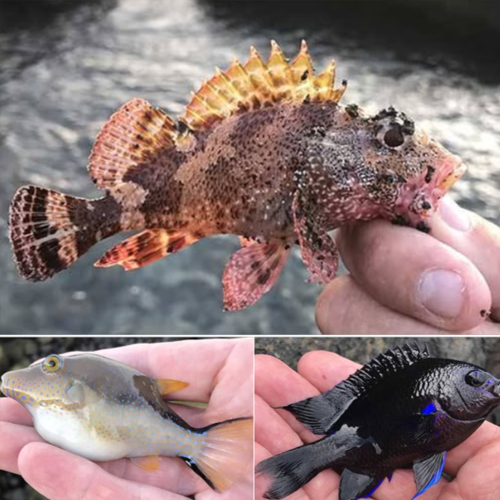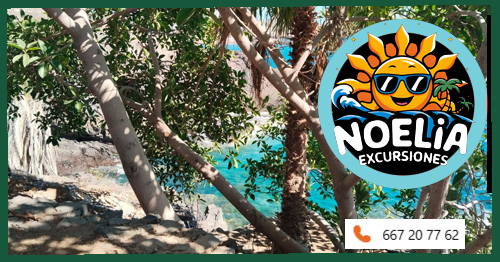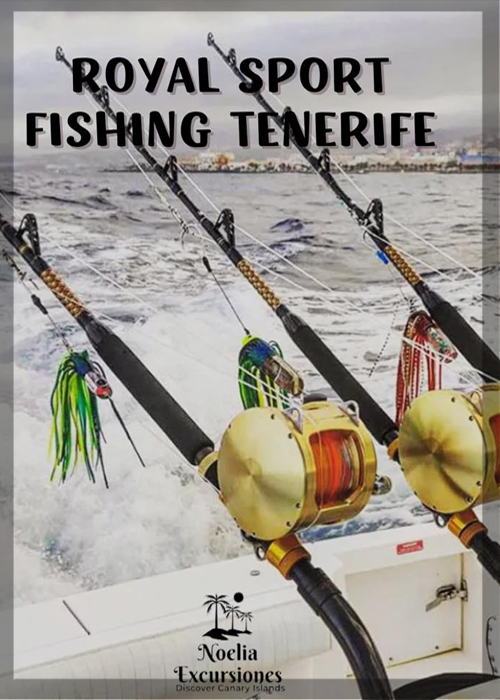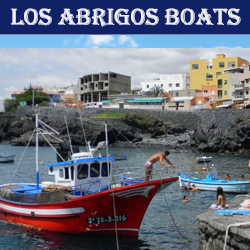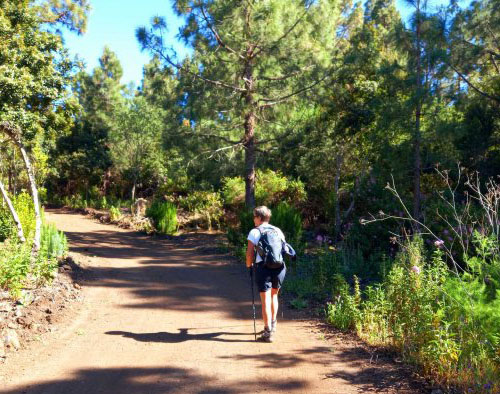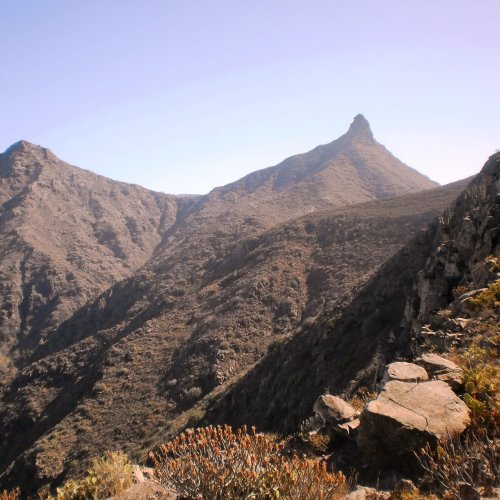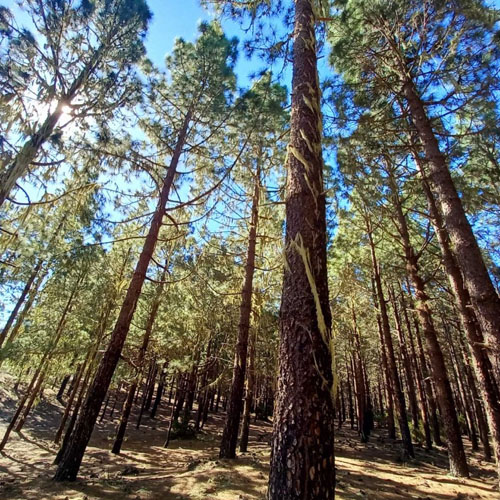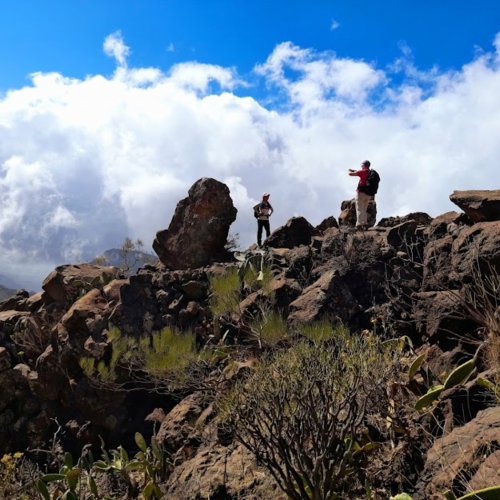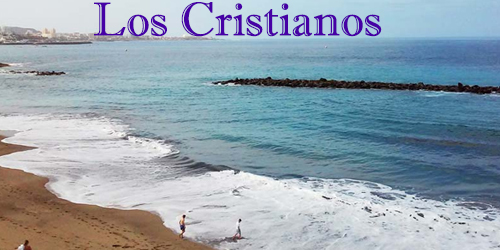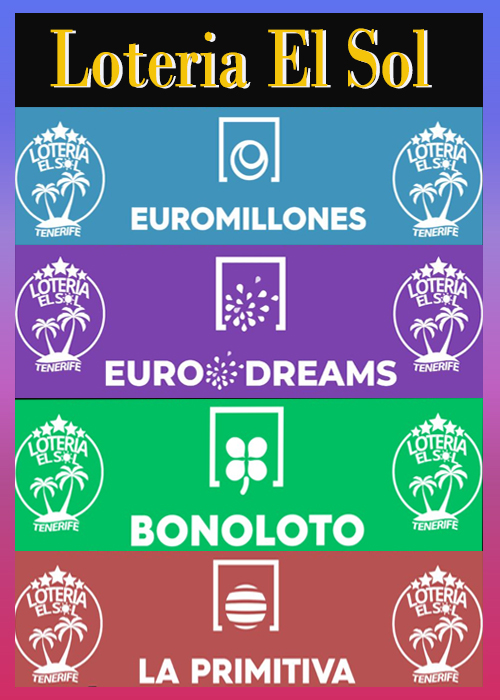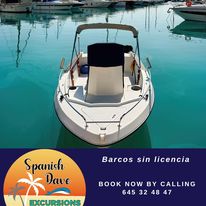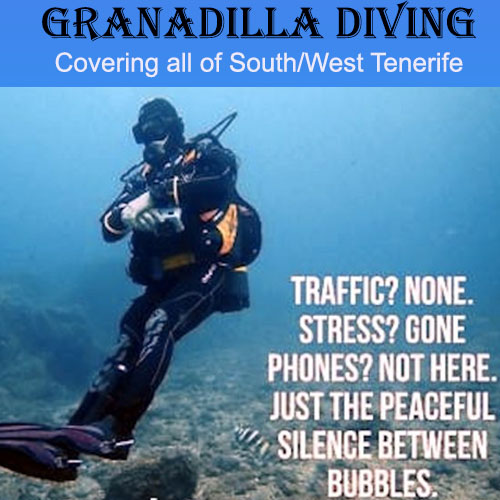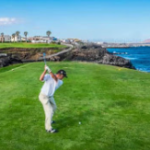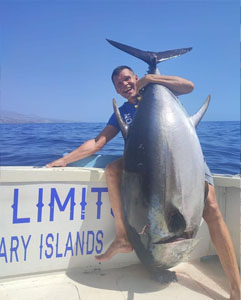- Ornate Wrasse
- Madeira Rockfish
- Blenny Fish
- Pufferfish
- Damsel Fish
- Mullet
- Barracuda
- Lizardfish
You need a license to fish off the shore or harbour walls. The Canary Islands fishing license is valid for 3 years and you can order it online.
Its mainly little fish but grab your rods, sandwiches and drinks and wile away a few hours. You might catch dinner. The harbour outer walls are made up of big boulders, which can be a hassle if you catch your line in between them.
Rockfish hiding in the reefs and rocky bottoms are numerous, joined by many other colorful creatures, such as Wrasse, Pufferfish, Damselfish, Seabream. While these fish may not grow to impressive sizes, they are fun to target and provide fishing fun for the whole family.
Ornate Wrasse
The Ornate Wrasse is one of the Tenerife fish that are relatively easy to catch. You will find them living in various sized groups around rock marks, harbour walls and even in rock pools. These Wrasses are not fussy eaters and you can catch them float fishing with baits such as bread, prawn, mussel, squid and even strips of ham. You can also catch these fish on artificial baits. Small 2” lures such as the grass minnow and some worm rigged on a small size 10 jig head will take fish. With them living in groups, if you catch one you should catch plenty more. They grow to around 20cm in length and will fight hard on light tackle.
Madeira Rockfish
The first thing that I will say about this Tenerife fish, is to be very careful when you handle them. They have a sharp, spiky dorsal fin which is very venomous. They can be found in shallow water, living amongst rocks and boulders. The fish are ambush predators which stay hidden away until a food source passes. The clever fish will shoot out from their rocky lair, ambush the food item and return to their home. Bait fishing will catch the odd fish, but generally, you need to use small 2” lures and work them amongst the rocks and boulders to catch them.
Blenny Fish
Blennies and Gobies: We have put these two fish together as one because these Tenerife fish live in the same type of area and consume the same sorts of food. They will inhabit very shallow water and live amongst any structure such as rocks and weed that makes them feel safe. By far the best place to catch these though is in the many large rock pools that can be found in the area. Use small hooks around the size 10 mark and using small pieces of bait such as squid, prawn, mussel and bread will enable you to catch these fish. As well as bait, try small lures around the 1.5”-2” mark. These are very common Tenerife fish that are easy to catch and a large rock pool will hold numerous fish.
Pufferfish
These are quite common around the Canary Islands and can often be seen in the clear water swimming around. Catching them is relatively straight forward. You will need really small hooks, sizes around the 12-14 mark is ideal. Small bits of bait such as squid, mussel, cockle and prawn will work as will small pieces of bread. Float fishing for them is the best method, although small lures can be used. The best place to catch these is around the rocks or from the beach.
Damsel Fish
Another common type of Tenerife fish is the Blue Finned Damsel. These can often be seen swimming in small groups around rock pools, close to rocks and around the outer walls of marinas. Similar to the pufferfish, they have very small mouths so baits and hooks need to be small. Size 10-14 hooks with tiny pieces of squid, prawn or mussel will work, but the easiest and most commonly available bait is bread. These fish aren’t really predatory, so lures aren’t worth using.
Mullet
Mullet can be seen swimming in large shoals in sheltered water around the marinas, beaches and large rock pools. These are by far the trickiest Tenerife fish to catch. Use tiny hooks and fine line to try and catch these wary fish. Introduce lots of bread in the water and get the shoal feeding before trying to catch one. Small hooks around the size 10 mark with a tiny piece of bread on is by far the best method, although free lining will work. You don’t want any weight near the hook, you need your bait to sink naturally. They have soft moves, so don’t strike too hard.
Barracuda
The barracuda is an out and out predator with its diet consisting of predominantly other fish. Although these fish can grow to 20lbs plus in weight, lots of smaller juveniles can be caught from the beach and rock marks. Although using live bait will work, by far the best method to catch this Tenerife fish is to use lures. Hard lures such as crank-baits, poppers, spinners and spoons are by far the best types to use. You must remember though to use a fine wire trace as the sharp teeth of the barracuda will make the short work of a normal fishing line.
Lizardfish
Another Tenerife fish that takes a liking to the various hard lures are lizardfish. Similar to the barracuda, these fish are an out and out predator that consume other fish. They lie buried in the sand with just their eyes poking out and wait for any small fish to pass by. They then shoot upwards, grab their prey and return to the bottom.
Recreational fishing is a regulated activity and can be of various types:
- Shore-based: fishing on foot from the shore.
- From a boat: that which is practised from boats suitable for this activity and registered in the corresponding list of the Official Register of Vessels.
- Spearfishing: that which is practised by free diving, without using any type of element that allows breathing during immersion, or mechanical means of propulsion.
Recreational Fishing Licences
A fishing licence is compulsory for recreational fishing. Recreational fishing licences issued in other Spanish autonomous communities are also valid in the Canary Islands.
There are three types of recreational fishing licence:
- First Class Licence: is required for fishing from a boat with a handline, rod, trolling line, surface trolling line, volantino and jig.
- Second Class Licence: required for spearfishing with hand or mechanically propelled means (spearguns) and shell-fishing on foot.
- Third Class Licence: required for surface, shore and boat fishing and shell-fishing on foot.
Processing of Recreational Fishing Permits
All fishing licences can be applied for either in person or online. These licences become active immediately and are valid for three years. They must always be carried with you when you go fishing. read more:
